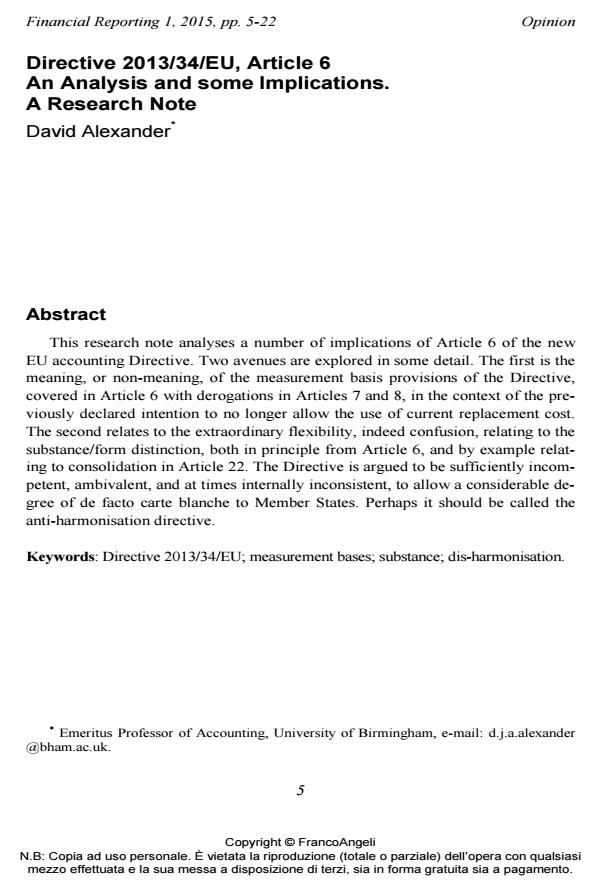Directive 2013/34/EU, Article 6 An Analysis and some Implications. A Research Note
Journal title FINANCIAL REPORTING
Author/s David Alexander
Publishing Year 2015 Issue 2015/1
Language English Pages 18 P. 5-22 File size 190 KB
DOI 10.3280/FR2015-001001
DOI is like a bar code for intellectual property: to have more infomation
click here
Below, you can see the article first page
If you want to buy this article in PDF format, you can do it, following the instructions to buy download credits

FrancoAngeli is member of Publishers International Linking Association, Inc (PILA), a not-for-profit association which run the CrossRef service enabling links to and from online scholarly content.
This research note analyses a number of implications of Article 6 of the new EU accounting Directive. Two avenues are explored in some detail. The first is the meaning, or non-meaning, of the measurement basis provisions of the Directive, covered in Article 6 with derogations in Articles 7 and 8, in the context of the previously declared intention to no longer allow the use of current replacement cost. The second relates to the extraordinary flexibility, indeed confusion, relating to the substance/form distinction, both in principle from Article 6, and by example relating to consolidation in Article 22. The Directive is argued to be sufficiently incompetent, ambivalent, and at times internally inconsistent, to allow a considerable degree of de facto carte blanche to Member States. Perhaps it should be called the anti-harmonisation directive.
Keywords: Directive 2013/34/EU; measurement bases; substance; dis-harmonisation
- Conceptual shifts in accounting: Transplanting the notion of boundary from financial to non-financial reporting Laura Girella, Mario Abela, Elisa Rita Ferrari, in FINANCIAL REPORTING 1/2018 pp.133
DOI: 10.3280/FR2018-001005 - The European Harmonization of National Accounting Rules Alberto Incollingo, Andrea Lionzo, pp.313 (ISBN:978-3-031-42930-9)
- Eurasian Business Perspectives Gabriele D’Alauro, pp.107 (ISBN:978-3-030-11871-6)
David Alexander, Directive 2013/34/EU, Article 6 An Analysis and some Implications. A Research Note in "FINANCIAL REPORTING" 1/2015, pp 5-22, DOI: 10.3280/FR2015-001001